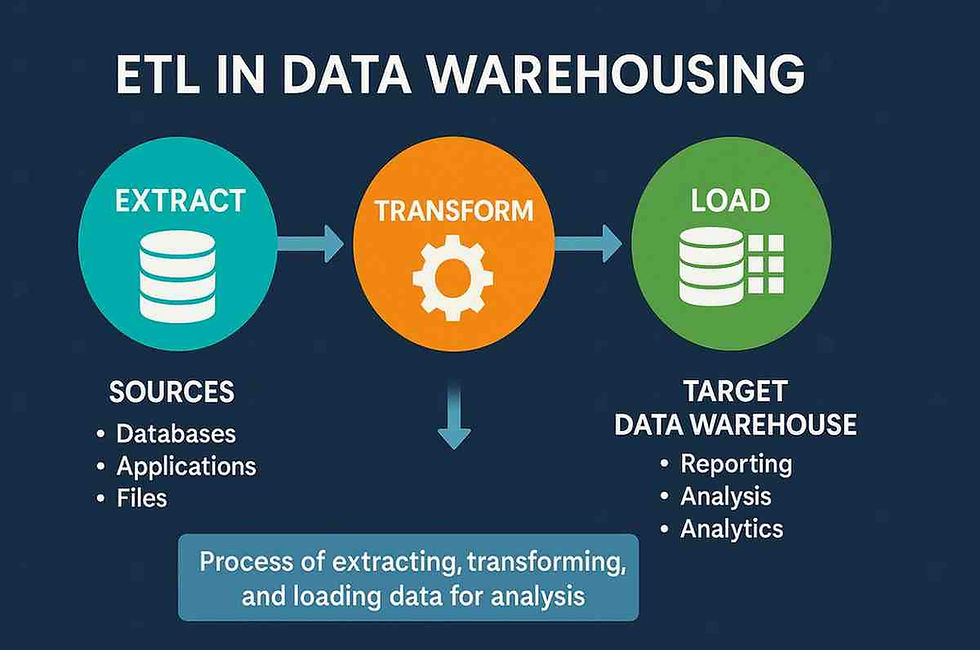5 Tips for a Better Traceability Matrix in Testing
- Gunashree RS
- Jul 12
- 7 min read
5 Simple Tips for a Better Traceability Matrix in Testing
Ever wondered why some testing projects run smoothly while others hit constant roadblocks? The secret often lies in something called a traceability matrix. Don't worry - it's not as complicated as it sounds. Think of it as your testing GPS that keeps track of where you've been and where you need to go.

What Is a Traceability Matrix in Testing?
Q: What exactly is a traceability matrix, and why is it essential?
A Traceability Matrix is a document (usually a table) that maps and tracks relationships between requirements, test cases, and defects. It ensures every requirement is tested and proves coverage, helping teams identify gaps or missing tests. The Traceability Matrix is an essential document used during the software development lifecycle of a product, and it ensures completeness and transparency of the underlying product. It is also called the Cross Reference Matrix (CRM) or Requirement Traceability Matrix (RTM).
Q: How does a traceability matrix work in practice?
The traceability matrix serves as a bridge connecting various project artifacts. The result is a reliable system for tracking requirement implementation and verification. A traceability matrix requires specific parameters to effectively track testing progress. These include requirement IDs to uniquely identify each feature, requirement version to track changes over time, and corresponding test cases that validate each requirement.
Types of Traceability Matrices in Testing
Q: What are the different types of traceability matrices I should know about?
Understanding the various types helps you choose the right approach for your specific testing needs:
Forward Traceability Matrix
Map requirements to test cases
Ensures all requirements have corresponding tests
Helps identify requirement coverage gaps
Backward Traceability Matrix
Maps test cases back to requirements
Identifies orphaned test cases
Ensures no unnecessary testing efforts
Bidirectional Traceability Matrix
Combines forward and backward traceability
Provides comprehensive coverage analysis
Most recommended approach for complex projects
Horizontal Traceability Matrix
Tracks requirements across different phases
Maps business requirements to functional requirements
Ensures alignment throughout the development lifecycle
Key Components of an Effective Traceability Matrix
Q: What elements should I include in my traceability matrix?
A well-structured traceability matrix typically includes:
Essential Components:
Requirement ID: Unique identifier for each requirement
Requirement Description: Clear, concise requirement statement
Test Case ID: Corresponding test case identifier
Test Case Description: Brief test case summary
Test Status: Current execution status (Pass/Fail/Not Executed)
Defect ID: Associated bug or issue identifier
Priority/Severity: Risk assessment and priority levels
Additional Tracking Elements:
Version numbers for change management
Test execution dates
Responsible tester assignments
Cross-references to design documents
Why This Matters
Q: Do I need to bother with this?
Look, nobody gets excited about traceability matrices. But here's the thing - they save your bacon when things go wrong. Organizations with proper traceability see 35% fewer post-release defects and 40% better audit compliance. That's fewer angry customers and fewer weekend emergency fixes.
Plus, when your boss asks, "Did we test the payment feature?" you can answer with confidence instead of that awkward "Um... I think so?"
5 Simple Tips for Better Traceability Matrix
Q: How can I make my traceability matrix more effective?
Here are 5 proven tips that work:
Tip 1: Start Simple with Clear IDs
Don't overthink it. Give each requirement a simple ID like REQ-001, REQ-002. Match them with test cases like TEST-001, TEST-002. That's it. No fancy numbering systems needed.
Tip 2: Use Tools That Help
To manage continuously and frequently changing requirements, you need to have a proper process for systematically analysing the impact of each proposed change. Tools like JIRA with TM4J make this easy. Excel works for small projects, but you'll thank yourself later for using proper tools.
Tip 3: Keep It Updated (Really!)
When project requirements change, a traceability report allows you to identify all of the impacted artifacts. Set aside 30 minutes each week to update your matrix. It's like brushing your teeth - boring but essential.
Tip 4: Focus on What Matters
Not every requirement needs 10 test cases. Focus on the risky stuff first. Your users won't care if you perfectly tested the "About Us" page, but they'll notice if the payment system breaks.
Tip 5: Make It Visual
Use colors, charts, whatever works. Green for passed tests, red for failed ones. Visual matrices are easier to understand and spot problems quickly.
3 Common Problems and Quick Fixes
Q: What goes wrong, and how do I fix it?
Problem 1: My matrix is too complicated.
Fix: Keep it simple. If your grandmother can't understand it, it's too complex.
Problem 2: Nobody updates it.
Fix: Make one person responsible. Give them 15 minutes every few days to keep it current.
Problem 3: It takes forever to create.
Fix: Use templates. Don't reinvent the wheel every time.
Industry-Specific Traceability Requirements
Q: How do traceability requirements vary across different industries?
Regulated Industries (Healthcare, Finance, Aviation)
Accurate reviews and audits have become essential to the success of software companies, especially in regulated industries. For those industries, traceability tracking is a requirement and a crucial tool that helps auditors to review requirements and impacted artifacts.
100% traceability coverage is often mandatory
Detailed audit trails are required
Compliance documentation essential
Agile Development Environments
Lightweight traceability approaches are preferred
Integration with user stories and sprint planning
Emphasis on automated traceability updates
Large Enterprise Projects
Multi-level traceability matrices
Cross-functional team coordination
Comprehensive impact analysis capabilities
4 Steps to Create Your First Matrix
Q: How do I build one?
Step 1: List Your Requirements Write down what your software needs to do. Keep it simple. "Users should be able to log in" is better than "The system shall provide authenticated access protocols."
Step 2: Create Test Cases. For each requirement, write at least one test case. More for the important stuff, less for the boring stuff.
Step 3: Connect Them. Make a simple table. Requirement on one side, test case on the other. Draw lines or use a spreadsheet.
Step 4: Track Progress Mark tests as Pass, Fail, or Not Done. Update regularly. That's it.
Advanced Traceability Techniques
Q: What advanced strategies can enhance my traceability matrix effectiveness?
Risk-Based Traceability: Focus traceability efforts on high-risk areas of the application, ensuring critical requirements receive comprehensive coverage.
Automated Traceability Updates: Implement CI/CD pipeline integration to automatically update traceability status based on test execution results.
Visual Traceability Mapping: Use graphical representations to illustrate requirement relationships and dependencies more clearly.
Metrics-Driven Traceability: Track traceability metrics such as coverage percentages, gap identification rates, and maintenance effort to optimize processes.
The Future of Traceability in Testing
Q: How is traceability evolving with new technologies and methodologies?
Emerging Trends:
AI-Powered Traceability: Machine learning algorithms automatically suggest requirement-to-test mappings
Real-Time Traceability: Live updates and notifications for traceability changes
Visual Analytics: Interactive dashboards for traceability visualization
Integration with DevOps: Seamless traceability throughout the entire development pipeline
Industry Adoption Patterns:
67% of organizations plan to implement automated traceability tools by 2026
45% increase in traceability-related tool investments over the past two years
Growing emphasis on traceability in regulatory compliance frameworks
Conclusion
Here's the deal: traceability matrices aren't rocket science. They're just a way to make sure you don't miss testing important stuff. Start simple, keep it updated, and use tools that make your life easier.
The fancy terminology and complex processes can wait. Just focus on connecting your requirements to your tests, and you're already ahead of mmost teams out there.
Remember: A simple matrix that gets used is infinitely better than a perfect matrix that sits on a shelf gathering dust.
Key Takeaways
Keep your traceability matrix simple - fancy doesn't mean better
Use clear, simple IDs like REQ-001 and TEST-001
Update your matrix regularly (set a weekly 30-minute reminder)
Focus on high-risk requirements first; not everything is equally
Visual matrices with colors work better than boring spreadsheets
One person should own the matrix to avoid confusion
Simple tools beat complex ones if they are used
35% fewer bugs when you do traceability right
Connect requirements to tests - that's the whole point
A used simple matrix beats a perfect unused one
Frequently Asked Questions
Q: What's the difference between a traceability matrix and a test coverage report?
A: A traceability matrix maps specific requirements to test cases and tracks their relationships, while a test coverage report measures the percentage of code or functionality that has been tested. The traceability matrix is more detailed and relationship-focused.
Q: How often should I update my traceability matrix?
A: Traceability matrices should be updated continuously throughout the project lifecycle. Ideally, updates should occur whenever requirements change, new test cases are created, or test execution status changes.
Q: Can I use Excel for traceability matrices, or do I need specialized tools?
A: While Excel can work for small projects, specialized tools like JIRA with TM4J, Azure DevOps, or dedicated test management platforms are recommended for larger projects due to automation capabilities and better integration.
Q: What's the minimum information required in a traceability matrix?
A: The minimum required elements are requirement ID, requirement description, test case ID, test case description, and test execution status. Additional elements like priority, defect IDs, and dates enhance effectiveness.
Q: How do I handle one-to-many relationships in traceability matrices?
A: Use separate rows for each relationship or implement a hierarchical structure. Many tools support advanced mapping features that can handle complex many-to-many relationships more efficiently.
Q: What's the typical coverage percentage I should aim for in my traceability matrix?
A: Most organizations aim for 90-100% requirement coverage, meaning every requirement should have at least one corresponding test case. However, the exact percentage may vary based on project risk and industry requirements.
Q: How do I manage traceability in Agile projects with frequently changing requirements?
A: Implement lightweight traceability approaches, use automated tools for updates, integrate with user story management, and maintain living documentation that evolves with the project.
Q: What are the signs that my traceability matrix needs improvement?
A: Key indicators include frequent post-release defects, difficulty in impact analysis, audit compliance issues, gaps in test coverage, and team confusion about requirement status.
Article Sources
SmartBear - "3 Tips for Better Traceability in Jira" - https://smartbear.com/blog/3-tips-for-better-traceability-in-jira/
Quash - "Traceability Matrix in Software Testing: A Complete Guide 2025" - https://quashbugs.com/blog/understanding-traceability-matrix-in-software-testing
GeeksforGeeks - "Requirements Traceability Matrix - RTM" - https://www.geeksforgeeks.org/requirement-traceability-matrix/
Aqua Cloud - "Traceability Matrix in Software Testing: Full Guide 2025" - https://aqua-cloud.io/traceability-matrix/
Perforce - "What Is a Requirements Traceability Matrix? Your A–Z Guide" - https://www.perforce.com/resources/alm/requirements-traceability-matrix
BrowserStack - "Importance of Traceability Matrix in Testing" - https://www.browserstack.com/guide/importance-of-traceability-matrix-in-testing




INDOVIP138
indovip138
indovip138
indovip138
indovip138
indovip138
indovip138
indovip138
indovip138
indovip138
indovip138
indovip138
indovip138
indovip138
indovip138
indovip138
indovip138
indovip138
indovip138
indovip138
indovip138
indovip138
indovip138
indovip138
indovip138
indovip138
indovip138
indovip138
indovip138
indovip138
indovip138
indovip138
indovip138
indovip138
indovip138
indovip138
indovip138
indovip138
indovip138
indovip138
indovip138
indovip138
indovip138
indovip138
indovip138
Link INDOVIP138
indovip138
indovip138
indovip138
indovip138
indovip138
indovip138
indovip138
indovip138
indovip138
indovip138
indovip138
indovip138
indovip138
indovip138
indovip138
indovip138
indovip138
indovip138
indovip138
indovip138
indovip138
indovip138
indovip138
indovip138
indovip138
indovip138
indovip138
indovip138
indovip138
indovip138
indovip138
indovip138
The DevZery blog explains how a traceability matrix serves as a "testing GPS," linking requirements, test cases, and defects to ensure full coverage and efficiency. Likewise, researchers can seek help with scientific paper formatting from Academic Editors to make manuscripts clear and polished. Both underscore the value of structured clarity and precision, in testing and in academic writing.